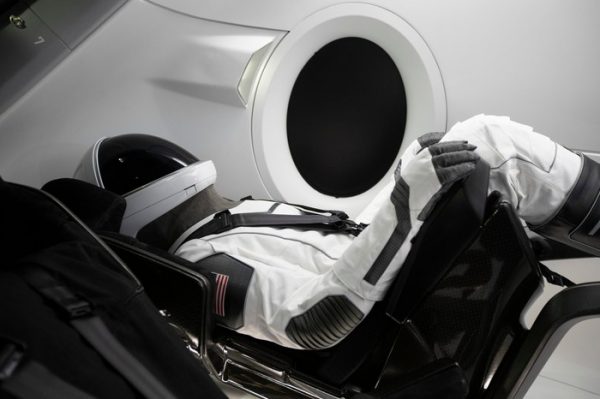SpaceX Aims to Swipe Space Tourism Market From Virgin Galactic – Motley Fool
This was just one of many tweets of consolation sent to space tourism company Space Adventures last week, after the company announced a partnership with SpaceX to send tourists into Earth orbit. As you can imagine with anything involving Elon Musk, this announcement generated a bit of excitement — so much so, in fact, that the number of potential customers rushing to check out the news quickly crashed Space Adventures’ website.
Oops.
And yet, having “too many customers” is the kind of problem any company would love to have. But what is it exactly that they were all hoping to sign up for?

Image source: Space Adventures.
To the moon (almost)!
So here’s the news in a nutshell: Sometime in late 2021, or perhaps 2022, four lucky travelers will board a SpaceX Crew Dragon space capsule — “the same spacecraft … that SpaceX will use to transport NASA astronauts to the International Space Station” — and embark upon a five-day trip around (and around, and around) the Earth.
Launched from Cape Canaveral atop a SpaceX Falcon 9 reusable rocket, Crew Dragon will accelerate faster than any other competing space tourism vessel currently under development, fast enough to attain orbital velocity, in fact. Crew Dragon will proceed to ascend to an altitude two to three times higher than the International Space Station, and there orbit the Earth multiple times before descending to land at sea, Apollo 11-style.
In fact, the space tourism trip Space Adventures describes bears another similarity to the Apollo moon missions: Assuming Crew Dragon reaches apogee at three times the altitude of the International Space Station, the four space tourists undertaking this mission will travel farther from Earth than anyone else has in recorded history — with the sole exception of the Apollo astronauts.
And that could be only the beginning. Commenting on her company’s collaboration with Space Adventures, SpaceX COO Gwynne Shotwell noted that together, these companies will be “making spaceflight possible for all people who dream of it.” This seems to suggest that if all goes according to plan, this could be the first of many space tourism launches for SpaceX — and the beginning of a brand new growth business.
But how much will it cost?
Neither SpaceX nor Space Adventures thought to mention a price tag for their new space tourism venture — but it’s almost certain to cost more than the $250,000 that Virgin Galactic (NYSE:SPCE) is planning to charge, or the “hundreds of thousands of dollars” price that Blue Origin has floated, for tickets aboard their suborbital SpaceShipTwo and New Shepard, respectively.
At last report, SpaceX has been charging prices as low as $50 million for satellite launch services utilizing Falcon 9. Now, assume SpaceX can do a crewed mission for that same price. Assume, too, that attaching Crew Dragon to Falcon 9 won’t add a penny’s worth of additional cost. (Hint: Don’t actually assume either of these things.)
Even if you also assume they don’t impose a surcharge for drinks and packaged peanuts during the trip, this suggests that the minimum SpaceX and Space Adventures could charge for putting four tourists into space might be $12.5 million apiece.
That being said, SpaceX and Space Adventures customers would get a lot of bang for their 12.5 million bucks. Virgin Galactic’s much cheaper suborbital plane-cum-spaceplane rides are expected to last only two hours total, of which only about six minutes would be floating weightless in space. Blue Origin is advertising its straight-up and straight-down suborbital New Shepard rides as lasting just 11 minutes.
So even if a five-day Crew Dragon ride costs 50 times more than a Virgin Galactic ride ($12.5 million divided by $250,000), you can count on the experience lasting 60 times as long (120 hours divided by 2). And most of your time aboard Crew Dragon, you’ll actually be in space, rather than just traveling to and from space — and at a height 10 times higher than anything Virgin or Blue Origin can manage.
For anyone who can pony up the cash, I have to believe that’s going to be the deciding factor. The kind of space tour that SpaceX and Space Adventures are advertising should beat anything Virgin or Blue Origin can offer, hands down.
Granted, Virgin and Blue both aim to begin launching suborbital space tours this year, meaning that they’ll be first to market. But even that may work in the new entrants’ favor. By whetting the public’s appetite for space tourism this year, Virgin and Blue may simply ensure that, by the time Crew Dragon is ready to carry passengers, it will find a ready market.
Call me an optimist, but I predict that this will all work out very well for SpaceX.






